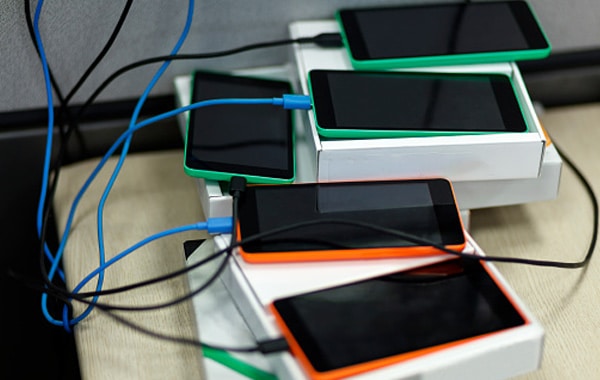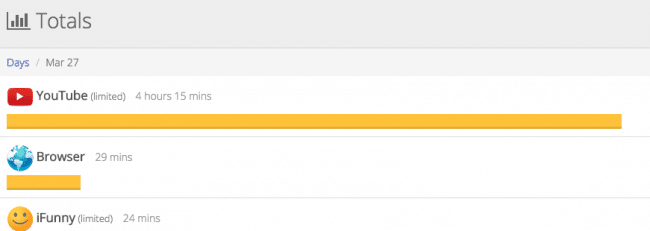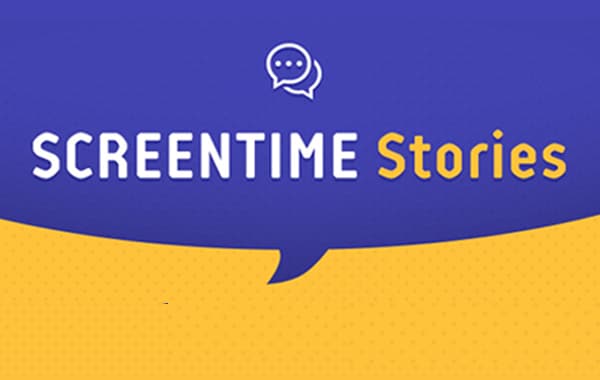Before Easter we talked to Kim, a mom of 3 with a blended family of 6 (all boys!), about her experiences with Screen Time and the challenges that her family faces managing the time on their devices.
Having worked as an Instructional Technology Specialist for the last 15 years, Kim’s job is to integrate technology into schools and educate parents on digital safety. So she has her finger on the pulse when it comes to tech and there has always been a culture of device control and safety in her family’s house.
Until December Kim had relied on the inbuilt parental controls in Apple and Android and less techy methods of spotting when the boys had been on their devices for too long. That all changed when three of the boys (two are 13 and one is 16 years old) had cell phones bought for them at Christmas. With the new cell phones it meant that they could use their devices out of sight and it was going make imposing limits a lot harder.

The risks
Being a blended family like Kim’s, she was finding it hard to track the boy’s activity, getting them to put down the devices and interact with the world around them. They weren’t always in the same house, using same internet connections, also being teenagers they have more freedom to go out and meet up with friends so were often on cellular connections.
For us it’s about preventing addictive behaviour
Kim’s profession means she is well aware of the risks involved in giving unfettered access to internet content and gaming. She told us of an incident that happened in her district where some students had posted a video on Twitter of them involved in a sex act.
Because all of the students were minors it was classed as production and distribution of child pornography carrying a 30 years minimum sentence for those involved. For any of their friends that kept the video would also have been charged with possession which carries with it a 7 year sentence.
We prefer to teach discretion rather than abstinence
Despite having that sort of knowledge Kim prefers to give her boys some freedom and personal privacy while at the same time teaching them what is appropriate and what the risks involved in sharing content. Also she believe that the educational games have real potential to teach and help kids acquire new skills.
How Screen Time helped
Kim was already aware of lots of parental control apps and inbuilt controls but she chose to go for Screen Time as it had the right blend of features for her family. She explained to the boys that along with the new cell phones they were getting Screen Time would be installed on there, and they quickly understood that the rules were now set in stone.
Are they doing what they should be?
They use almost all of the features that Screen Time has to offer but for their eldest they’ve found that just monitoring his activity had made a huge difference.
One day he was home from school ill, but he was meant to be studying for a test the next day, Kim was working from home that day and could was check in from time to time. Each time she did, he seemed to be working and she heard the standard “yeah mom, I’m studying”.

At the end of the day she checked Screen Time logs and found that he’d been on Youtube for 8 hours, busted, big time! Kim took a screenshot, sent it to his dad, and he then texted:
Does this seem reasonable to you? Good luck with your test tomorrow
After that they kept a closer eye on the logs for a few days and found that the Youtube app was being used under 20 mins a day.
Internet street smarts
Kim was looking through the Web History logs for her boys and found that there were a lot of visits to dodgy looking survey sites. She took this information to them and asked what was happening, the kids explained that they were completing these online surveys and giving away personal information like phone numbers and email addresses to earn rewards in the game.

So Kim was able to explain why giving away private information when they didn’t know how or where it was going to be used, was a bad idea. This wasn’t something that had occurred to the kids before and now they have more tools to keep themselves safe online.
Er…what’s this now?
The boys were exploring what Screen Time could do as well. One day, shortly after they started using Screen Time, Kim and her husband received a notification that one of the boys had cleaned their room, which came as a bit of shock to Kim, there was even a picture attached of the sparkingly clean room.
It turns out that he’d discovered the Tasks feature in Screen Time before his parents had, and realised that he could earn more time for his Daily Limit.
The same conversations
Before Screen Time they were having the same conversations about what the limits were and what apps were allowed and which were definitely not. Screen Time has allowed Kim to solidify the rules and also give her greater insights into what her boys are doing on their devices and online.
Have you got a Screen Time story? Get in touch, we’d love to hear them.


Join the conversation